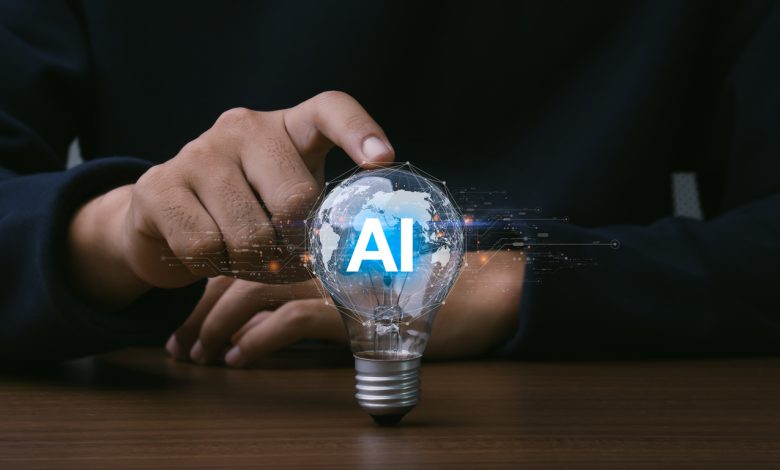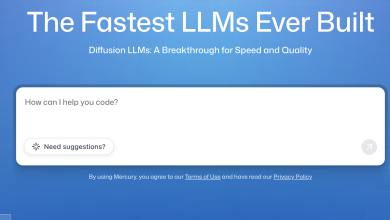
AI is changing the innovation and insight sector irrevocably. Turbocharging possibilities and speeding up processes that once took teams weeks.
With the ability to communicate and create in surprisingly human ways, AI is offering organisations speed, scale and precision like never before.
And the big brands are already experimenting. The likes of Coca-Cola co-created a new limited edition soda flavour – Y3000 – using AI, whilst Mondelez has also used AI to launch 70 new SKUs up to five times faster than traditional methods.
But the big question on the lips of most in the industry is this – can its speed and scale really deliver better innovation? Can AI help crack the industry’s stubborn 75% failure rate for new products? Or will it just result in more ‘me too’ products that add noise rather than value?
To answer this, let’s start by looking at how AI is currently being used and its future possibilities.
At the moment AI is being used to turbocharge product development. This is happening in two ways. The first is that it is being used to dramatically increase the volume of ideas and prototypes generated and then to filter them down. Generative AI models can produce an abundance of product ideas or design concepts in minutes. Ask an AI for new flavour combinations and it can give you 50 suggestions – ranging from the sensible to the bizarre. In fact, experts report they often ask AI to “generate 100 ideas” knowing full well that 90% will be mediocre but hidden in that batch might be a few gems worth exploring.
Of course, more ideas are only useful if you can quickly identify the promising ones. Here, AI also plays a role. Companies are deploying algorithms to simulate and test concepts virtually, narrowing the field before any real-world investment.
The second way AI is being used is to enhance the established best practice processes of innovation. Think of it as augmenting the classic stage-gate or design thinking process to do the work faster and better without cutting corners. Here, AI is not generating wacky moonshots from scratch; it’s acting as an assistant to enhance human strategic thinking, consumer understanding, and execution.
All great innovations start with a deep understanding of the consumer – their Jobs to Be Done, pain points, and unmet needs. This usually involves laborious research: mining data, reading reports and conducting interviews. AI can radically speed up this insight discovery. For instance, an AI text analyser can ingest years of consumer reviews, social media comments and survey feedback and then highlight recurring themes or “tensions” people express. Catalyx’s team did exactly this by applying AI to ten years of client consumer data, processing it in a single day to pinpoint genuine opportunity areas – work that would have taken weeks of manual analysis before.
Once the jobs-to-be-done stage is completed, AI can also be used as a prolific assistant in concept creation, drafting concept notes, product descriptions and even naming ideas. An AI can generate ten alternate phrasings of a benefit statement in seconds, giving copywriters a rich pool to work from.
It can also be used to produce numerous design drafts in seconds or to enhance an image render in ways that would normally take many hours of manual work. This “hybrid” design approach is proving very popular: the designer sketches an idea, the AI rapidly applies brand style guidelines or creates variants, and the designer then fine-tunes the best result.
AI predictive models are also being used to forecast which concepts might score higher, based on training data from hundreds of past concept tests. Whilst not foolproof, these models can flag obvious weak spots early and help teams iterate before costly in-market failures.
All of this input is helping innovation teams to refine new products faster. By speeding up the grunt work, AI lets human teams focus more on decision-making and creativity. Imagine a product manager who used to spend days crunching data for insights; now an AI can do it in hours and the manager can spend that time crafting a sharper concept or devising a better go-to-market plan. AI can also increase rigour: decisions can be based on analysing 100,000 consumer comments instead of 100, because AI made that analysis feasible. This approach doesn’t try to replace the human touch – it magnifies it, improving not just speed to market but fitness to market and increasing the chance that a new product will be a lasting success.
The benefits of using AI in the innovation process are plain to see. It can make the process quicker, bolder and broader but we must also be mindful of its limitations.
AI lacks human intuition, emotion and understanding. The key qualities that make innovation successful. It can’t replace the human touch. It is a powerful accelerator, but it is not a magic wand. It can help us innovate faster but only if guided by human strategy, creativity and understanding. It cannot grasp the why or the subtle emotions that drive our choices. It offers incredible speed and variety in idea generation but not wisdom or judgement.
AI can’t model emotional decision-making. It doesn’t know what people feel. It only knows what they say. So if a team relies solely on AI’s idea rankings or simulated metrics, they might choose a concept that should work on paper but flops in life – essentially, speeding up failure. For example, AI might identify a trendy combo (say, pineapple-mint chocolate) that pops in online chatter and it could even generate a great prototype for it. But will real consumers buy it? Here’s where human intuition and testing must intervene.
Today’s generative AI models are trained on colossal datasets of text, images, or other media. As we’ve seen, these deep learning models can recognise patterns and produce new content in a variety of modes but they are essentially backward-looking and they remix what already exists in their data. Unlike a human, an AI has no innate grasp of why a product excites us or the subtle emotions that drive our choices. It can churn out a hundred flavour ideas, but it doesn’t truly understand taste or desire – it’s drawing on what people have said about flavours in the past. This means AI’s outputs are only as good as the data (and prompts) we give it. It can amplify existing insights and uncover patterns at scale, but it also inherits biases and blind spots from its data.
That’s why it is important to view AI as a powerful innovation partner. We need to work with the tools not expect them to do the work for us. The best innovators will be those who pair human intuition skills with AI.
Looking ahead, we should expect to see more hybrid workflows in the innovation process. Where AI and human teams collaborate seamlessly, each doing what they do best. I think it is realistic to expect that this may also create two different speeds of innovation: a fast AI-driven cycle for incremental improvements and rapid-response trend innovation, and a slower, human-driven cycle for big strategic bets.
Organisations will need to invest in people, training, and culture as much as in AI technology. They will need savvy humans at the helm: people who know how to frame the right problems, interpret AI results critically and infuse the emotional, cultural and ethical considerations that differentiate a great product from a merely interesting one. There’s a growing analogy of treating AI like a junior team member – very fast and tireless, but inexperienced and lacking judgement.
In the end, AI is an accelerant. It will accelerate success for those who have the right innovation fundamentals and customer focus, and it will accelerate failure for those who do not. The technology by itself is neutral.
AI can improve innovation success rates, but not by making decisions for us – rather by giving us better tools to make our decisions.





